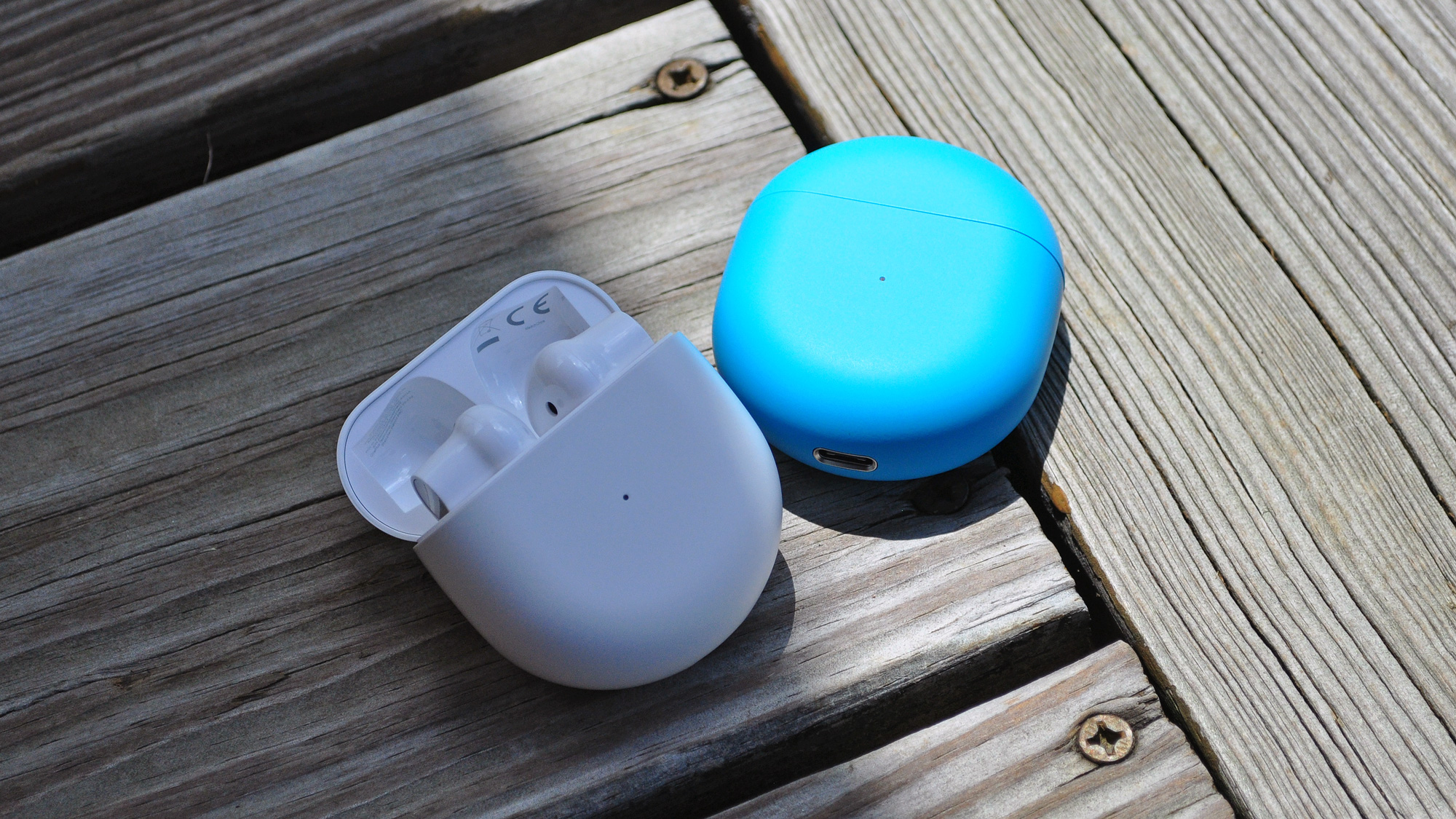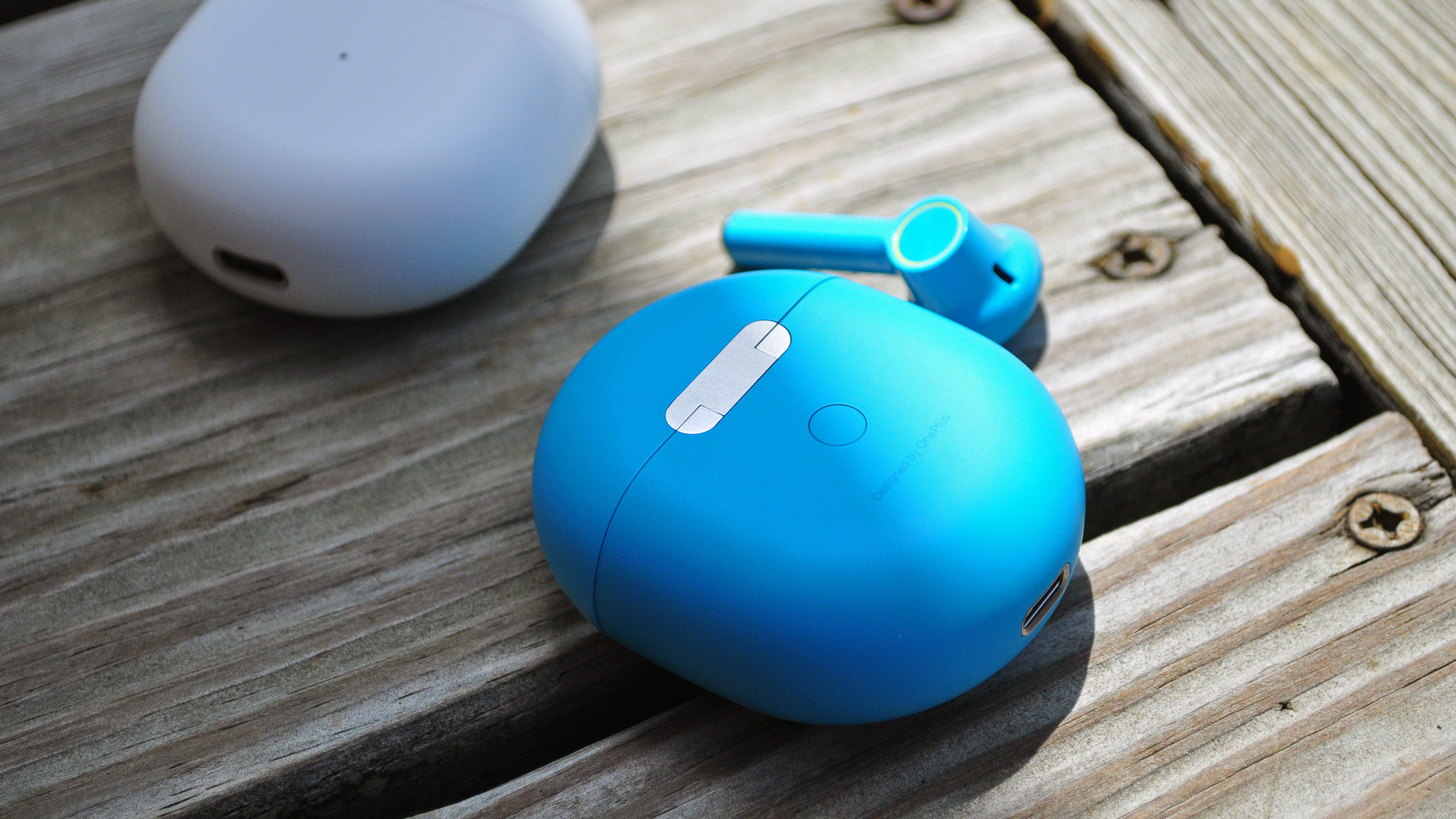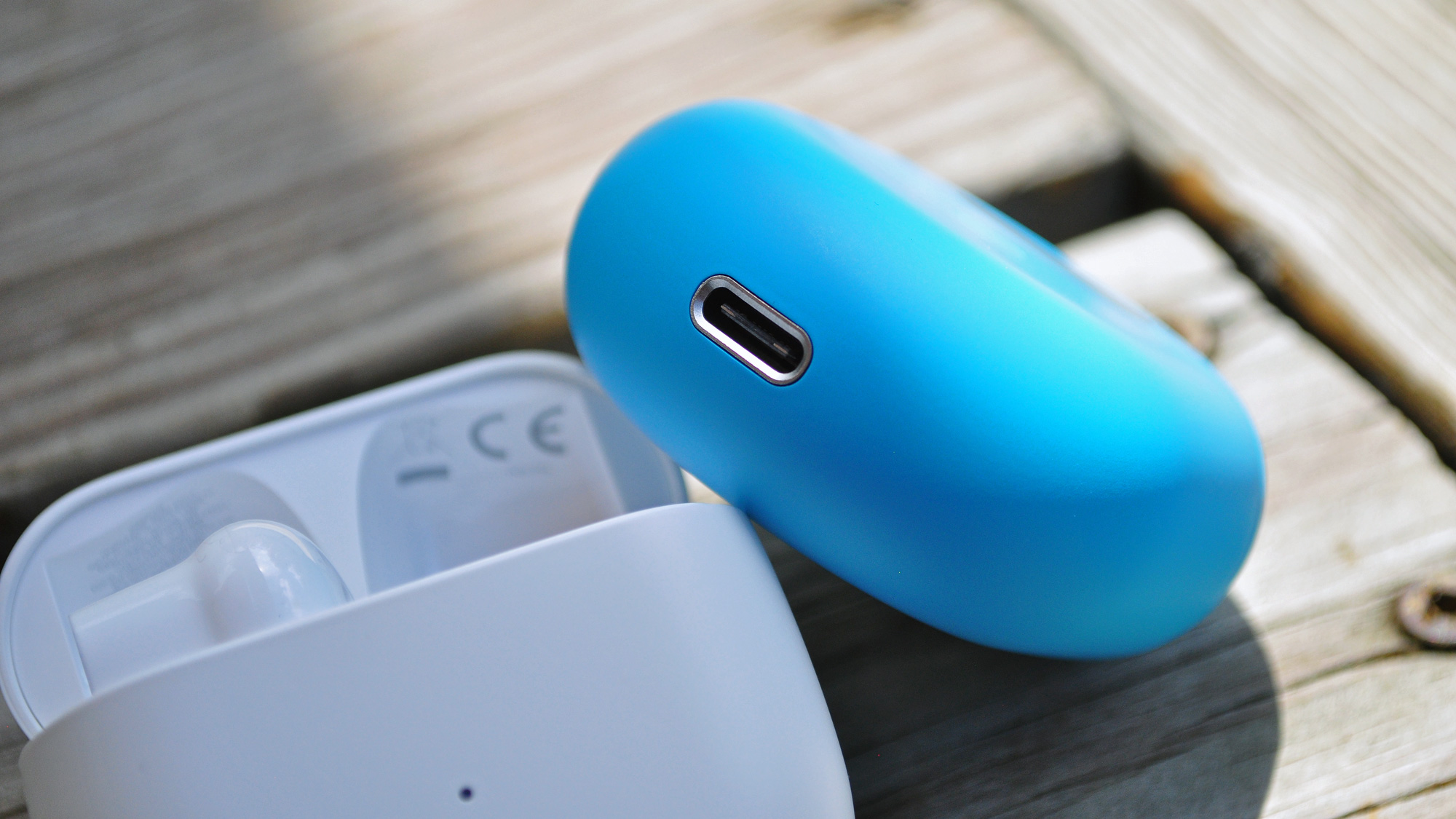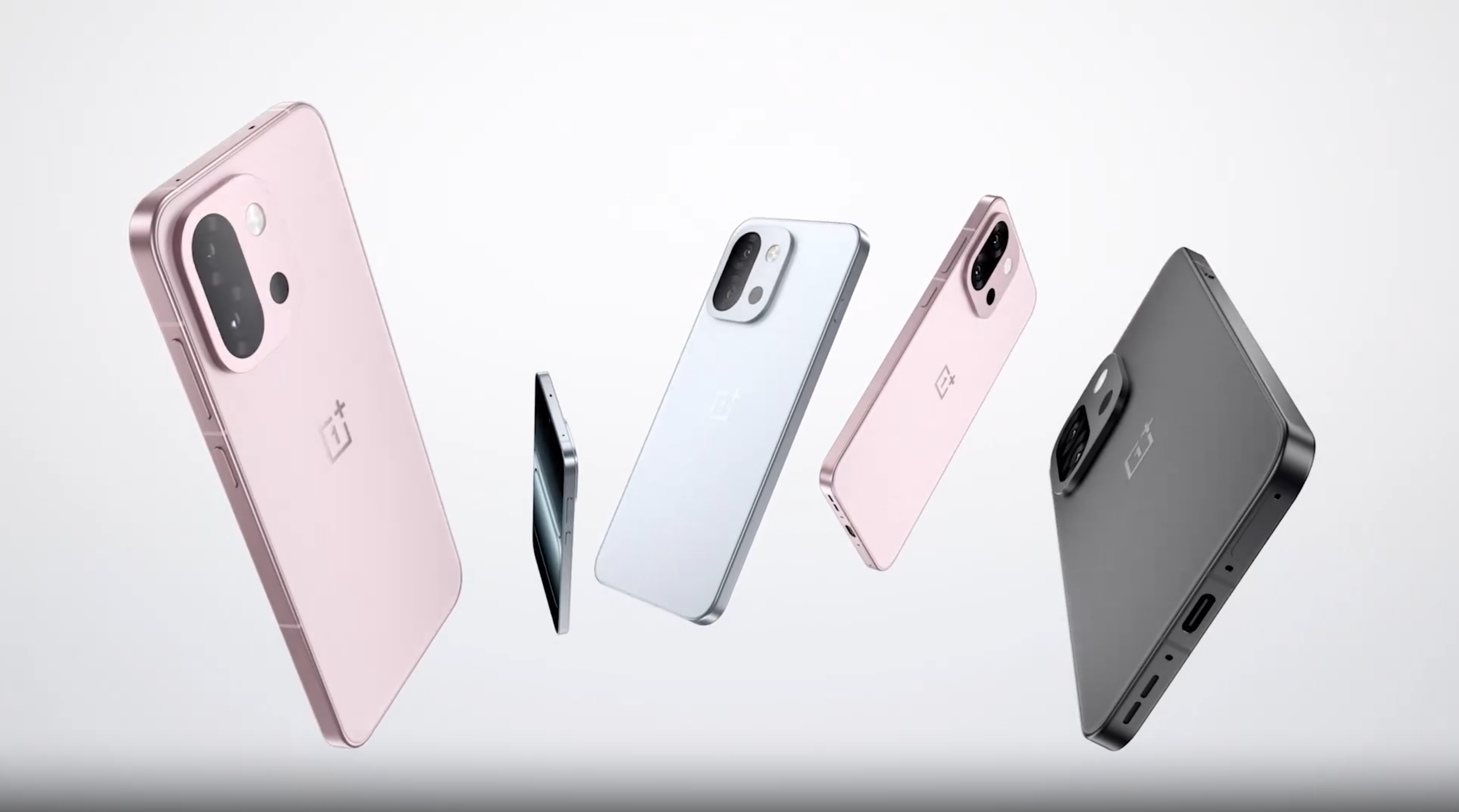Tom's Guide Verdict
The OnePlus Buds offer great battery life and compelling value, particularly for customers who also own one of the company’s phones. But muddy sound, an uncomfortable and cheap-feeling design and limited playback controls make it just average for everyone else.
Pros
- +
Long battery life
- +
Easy pairing and connectivity
- +
Low price
- +
Good call quality
Cons
- -
Overly bassy sound
- -
Uncomfortable design
- -
Limited controls
Why you can trust Tom's Guide
The new OnePlus Buds look vaguely like Apple's AirPods, work like them and are designed first and foremost to complement OnePlus’ phones, like the OnePlus 8 Pro and just-announced OnePlus Nord.
Colors: White, gray, Nord Blue (Europe/India only)
Battery life: 7 hours (earbuds); 28 hours (case)
Drivers: 13.4mm dynamic
Connectivity: Bluetooth 5.0
Size: 1.49 x 0.74 x 0.63 inches
Weight: 0.16 ounces (earbud); 1.3 ounces (case)
IP rating: IP4X
If you happen to own a OnePlus phone, they’re a respectable choice. OnePlus’ Buds err on the side of being too bassy and warm, but they get the job done, and offer neat software enhancements when used with one of the company’s phones. Most critically, they last long on a charge, and they’re also noticeably cheaper than AirPods, costing just $79 compared to the Apple’s ordinary $159 asking price.
However, if you don’t carry around a OnePlus phone in your pocket, these buds are a tougher sell compared to the best wireless earbuds out there. You lose some functionality, which makes it harder to ignore the fact that they’re just not very comfortable. As you’ll find in this OnePlus Buds review, this is unfortunately a case where the price may be cheap, but you pretty much get what you pay for.
- Also check out the Google Pixel Buds A-Series review
- The best cheap wireless earbuds you can buy today

OnePlus Buds review: Price and availability
OnePlus Buds will be available direct from OnePlus’ website on July 27 for $79 ($109 CAD). They come in three colors: white, gray, and Nord Blue. Gray will not be available at launch but will roll out later, while Nord Blue will remain exclusive to Europe and India, which also happen to be some of the only regions where OnePlus is selling its Nord handset for the time being.

OnePlus Buds review: Design
You could judge the design of the OnePlus Buds a couple different ways. My initial impression was that they look and feel adequate for the price; the case has a nice matte texture to it, a satisfying swing to its lid and a nice magnetic response when you drop the earbuds into the case and pull them out.
But then, of course, it can’t be avoided that the OnePlus Buds look a lot like any set of knockoff AirPods — and feel cheaper, too. Although they’re a smidge heavier than the AirPods (0.16 ounces compared to 0.14) there’s nothing particularly attractive or special about the plastic they’re cloaked in. It doesn’t help that the circular trim on their backs, which offers a surface for touch interactions, looks extremely chintzy as a consequence of its semi-glossy sheen.

In spite of that criticism, I’m not terribly bothered by the design or perceived quality of OnePlus’ first truly-wireless earbuds; they are, after all, half the price of Apple’s pair. And thankfully, even despite their relative affordability, OnePlus’ Buds are still durable, with an IPX4 rating that means they should survive water splashes or, more likely, sweat. That’s something you can’t say about regular AirPods.
On the back of the case itself is a button that’s really only used for re-pairing to a device; the initial pair just requires that the case’s lid be open. The case charges via USB Type-C, and does not support wireless charging.

OnePlus Buds review: Comfort
As with so many earbuds that employ a full-plastic housing that pokes into the ear without the need for silicone tips, the OnePlus Buds initially seemed quite comfortable to me. Because they’re so light, it didn’t take long before I forgot they were in my ears.
I only wish I could say the same after they spent an hour there. While the OnePlus Buds remained snug and secure whether I was sitting at my desk or going for a run, they always became uncomfortable at a certain point. I was unsure why at first, until I briefly switched to a pair of AirPods and realized that OnePlus’ Buds are simply too large for my ears.
Around the two-hour mark of a phone call, my ears became so sore, I had to intermittently remove the buds and place them back in for a brief respite. And after two-and-a-half hours, well, I couldn’t take it much longer, and had to end the call for sweet relief.
Now, in my experience, any pair of headphones eventually cause discomfort given enough time. However, over the years, I’ve found both Apple’s wired EarPods and Google’s wired USB-C Pixel Buds tend to be the most agreeable for my ears. I especially like Google’s loop system for its earbuds, where you can adjust the wire at the top to be bigger or smaller to accommodate differently-sized ears. Of course, in aping Apple’s design (only more clumsily) OnePlus Buds have no such adjustment feature.

OnePlus Buds review: Pairing and software
I have little faith in Bluetooth; as far as I’ve found, it’s always been an incredibly temperamental and finicky standard, with a propensity to disconnect or glitch out anytime the wind blows. Thankfully, the OnePlus Buds paired swiftly and reliably in my experience, even though I was using them in tandem with an iPhone 11 Pro and Google Pixel 4, rather than a OnePlus handset.
I counted two times I briefly lost audio when listening to music on the OnePlus Buds. Each time it happened, it was silence for about a second or two, before the tunes picked right back up. I also have to commend OnePlus on the range at which their buds operate. I was able to leave my phone in one room while I was in an adjacent one, and audio never wavered.
The buds turn on anytime they’re removed from the case, and turn off anytime they’re stored away. When you take one out of your ear while listening to content, playback pauses. If they’re out of your ears for three minutes, they’ll disconnect from the device.
That’s all well and good, and truthfully, the only part about the OnePlus Buds experience that gravely annoyed was the playback control — or lack thereof.
Remember that touch-sensitive surface on each bud? Double tapping it when you get a call will accept it; double tapping while you’re in the middle of a call will end it. If you’re listening to music, double tapping will skip forward a track. And, unless you have a OnePlus phone, that’s all you can do.

In fact, you can’t pause, resume, go back a track or access your device’s digital assistant unless you’re using your buds with a OnePlus device. OnePlus 6 and newer devices have a menu where you can personalize double tap actions separately between buds — so the right one can skip forward, while the left one skips backward, for example. However, even then, all you get are double-tap functions; single- or triple-taps can’t be set, and thus, you’re incredibly limited as to the ways you can control playback, even when you’re using one of the devices these buds were designed for.
I’m not commuting much these days (who is), but back when I was taking the subway into the office every day, this would’ve been a deal-breaking flaw. In my opinion, no pair of wired or wireless headphones should lack available and easily accessible play/pause and skip forward/backward controls. It’s 2020; those should simply be table stakes. And if you frequently summon Google Assistant or Siri, I regret to inform you OnePlus hasn’t made accessing those convenient either.
Now, to be fair, Apple’s AirPods have similar limitations, in that they only allow you to customize double-tap behavior and, even then, only if you are using them in tandem with an iPhone. But at least you have access to Hey Siri commands when using AirPods on iPhone; try as I might, I couldn’t get OK Google detection to work on my OnePlus Buds, even when I paired them to a Pixel 4. When it comes to controls, the Samsung Galaxy Buds Plus have both beat, even if its touchpads are a little overly sensitive.
All of this is to say that there was a real opportunity for OnePlus to add a few dead-simple features to their earbuds’ repertoire, and they whiffed on it. Call me a dinosaur, but my trusty wired Shure SE215’s and in-line remote sound really good right about now.

OnePlus Buds review: Sound and call quality
OnePlus has fitted its Buds with 13.4-millimeter dynamic drivers that also support Dolby Atmos audio — albeit, again, only with the use of a OnePlus phone.
There’s no question those drivers can deliver big on bass, to the point where it’s overpowering. Playboi Carti’s “Magnolia,” a song that blends precise synthy bass pulses with a delicate flute loop amidst Carti’s breathy, nimble verse delivery, was simply overwhelming even at moderate volumes.
To call the bass “warm” is an understatement — it was piping hot through OnePlus’ Buds, and obscured the intricacies of the production. The AirPods’ treatment of the track was a bit colder than I’d like, to be fair, but cleaner and thus more listenable overall.
But let’s say you’re listening to something less low-end driven; how do OnePlus’ Buds sound then? You certainly won’t be pummeled with bone-breaking bass listening to an indie rock track like Death Cab for Cutie’s “Transatlanticism,” though the Buds’ ham-fisted heat yet again hurts it dearly here.
Everything from Transatlanticism’s somber piano, to its repetitive percussion of a train bounding over tracks, to vocalist Ben Gibbard’s fragile, boyish singing felt as though it’d been funneled through a tube. The airy grandiosity of the song’s conclusion, marked by crashing cymbals, a choir’s refrain and a faintly whistling siren in the distance, feels aggressively curtailed here. The individual parts and cacophonous percussive hits congeal into an unimpressive whole, awash in a perforated sphere of hums and hiss and more bass than anyone would’ve asked for.
Fortunately, at least OnePlus’ Buds are well-equipped for phone calls. Through multiple conversations, my correspondents reported that my voice was clear and loud enough, perhaps helped by the earbuds’ ambient noise reduction.

OnePlus Buds review: Battery life and charging
Finally, we get to the one area in which the OnePlus Buds really do deliver: battery life. OnePlus says its buds are capable of 30 total hours of battery life if you factor in recharging via the case, and that the case has enough juice to top up both buds at least three times each. The company also pegs the earbuds’ individual battery life at up to 7 hours.
My testing has presented nothing to cause me to doubt those figures. In fact, I feel like they’re a bit conservative. Throughout one day, I was able to listen to music for about 6 hours and 40 minutes — with a short phone call thrown in there for good measure — before both earbuds chimed critical battery warnings with 10% remaining.
That’s mighty impressive given the low price. Consider the fact that we observed less than 5 hours of battery life from Apple’s AirPods before needing to recharge them in their case, and that Apple only quotes a minimum of 24 total hours as opposed to OnePlus’ 30. You don’t have to do much math to find that OnePlus’ Buds emerge with a clear longevity advantage.
Samsung’s Galaxy Buds Plus remains the battery life king, at least in terms of what you can expect out of a single charge. However, while the Buds Plus’ 11 hours beats out the OnePlus Buds’ claimed 7 hours of constant listening, OnePlus’ offering is rated to last 9 hours longer with the case’s battery factored in.
When it is time to charge, OnePlus says you can plug in the earbuds with the case via USB-C and get 10 hours of use out of 10 minutes, which is indeed very snappy.

OnePlus Buds review: Verdict
The OnePlus Buds are a reliable and long-lasting pair of truly wireless earbuds that are also very reasonably priced, in true OnePlus fashion. Unfortunately, however, unlike the company’s smartphones, they don’t outperform alternatives that cost more, and so they’re just decent for the price.
Indeed, if you can set aside nearly twice as much on a pair of AirPods or Galaxy Buds Plus, I wouldn’t hesitate to recommend those instead. They’re more comfortable, sound better and offer more, in terms of playback controls and customizability, than OnePlus’ earbuds. That’s especially true of the Galaxy Buds Plus, which even has its own app for iPhones. And if money is no object, you can’t do better than the Jabra Elite Active 75t right now.
But the best wireless earbuds tend to cost well into the triple digits, and if you don’t have that much to spend, the OnePlus Buds are a fine stand in. That especially rings true if you’re a OnePlus user already, or are chiefly concerned with battery life.
- More: OnePlus Buds vs Apple AirPods: Which wireless earbuds are best?
Adam Ismail is a staff writer at Jalopnik and previously worked on Tom's Guide covering smartphones, car tech and gaming. His love for all things mobile began with the original Motorola Droid; since then he’s owned a variety of Android and iOS-powered handsets, refusing to stay loyal to one platform. His work has also appeared on Digital Trends and GTPlanet. When he’s not fiddling with the latest devices, he’s at an indie pop show, recording a podcast or playing Sega Dreamcast.

